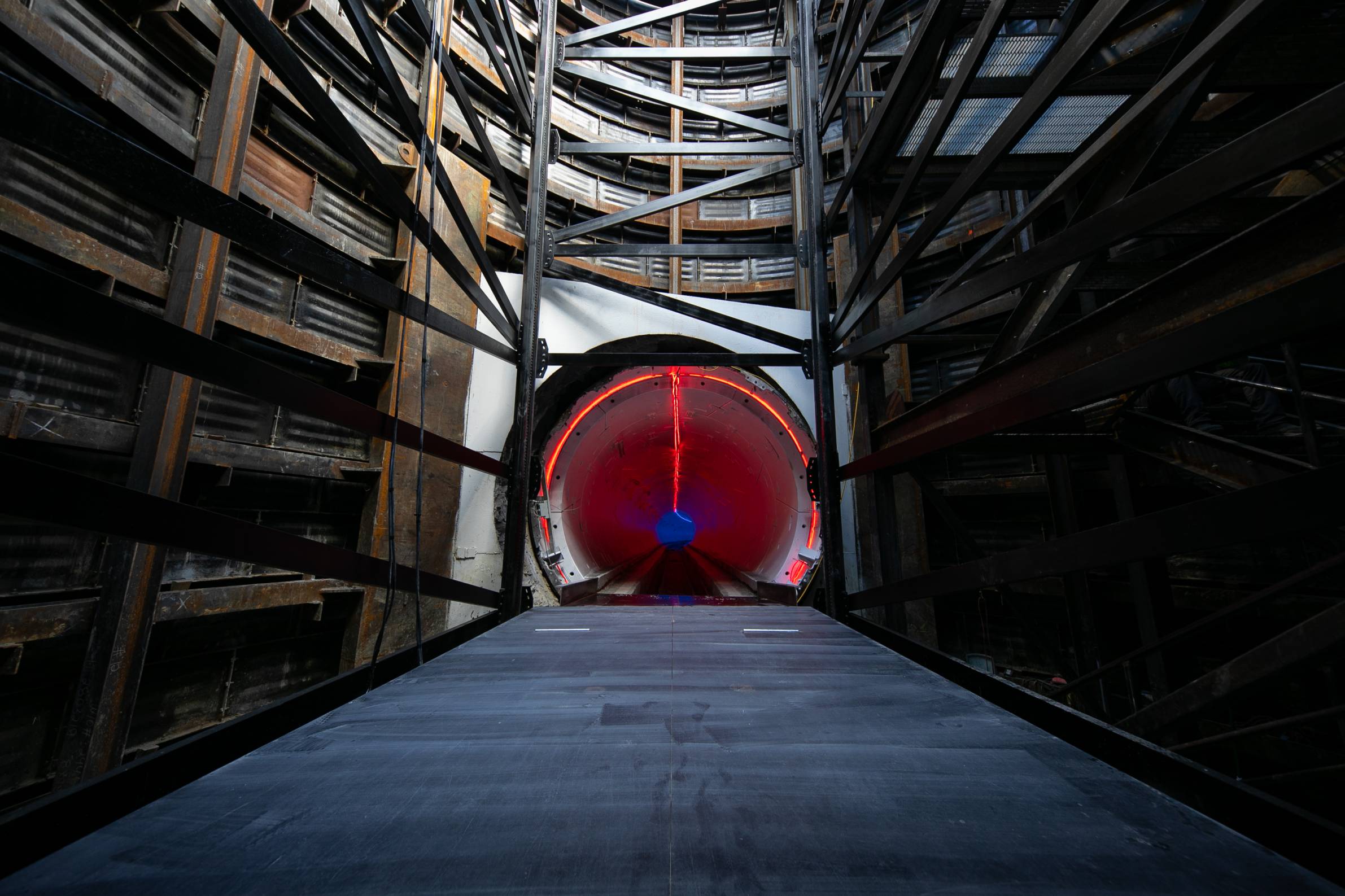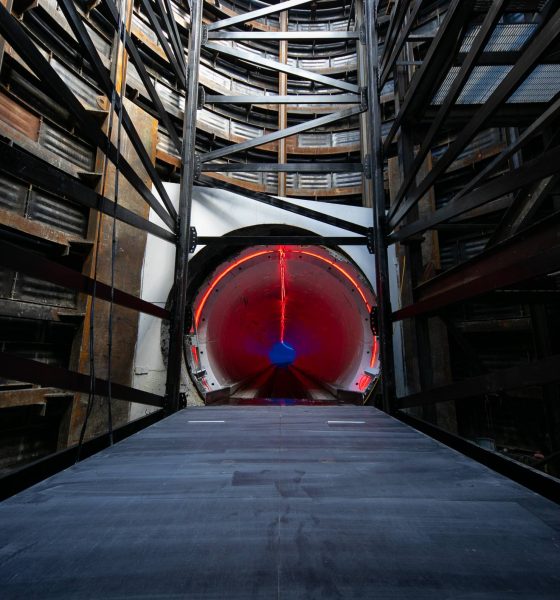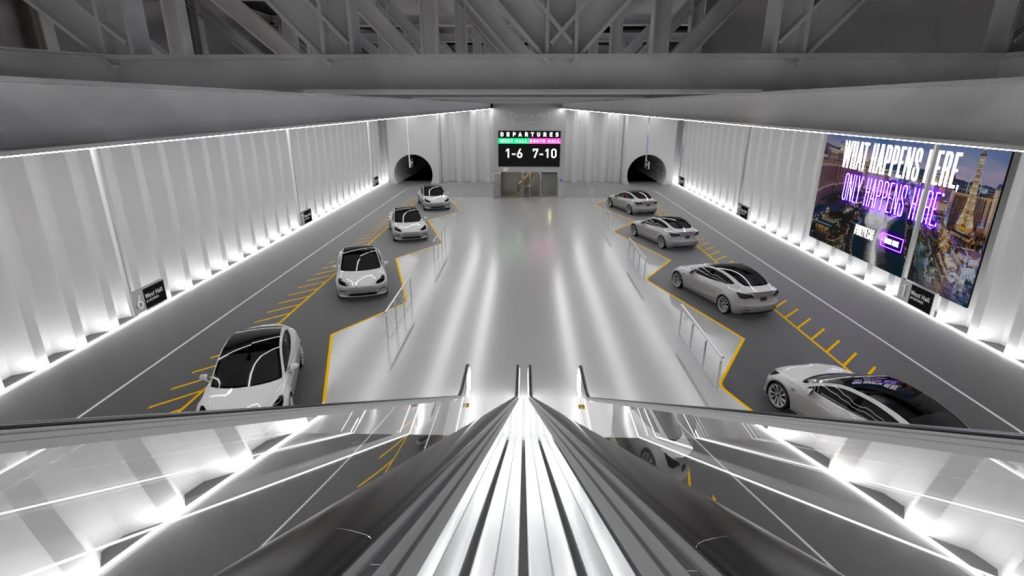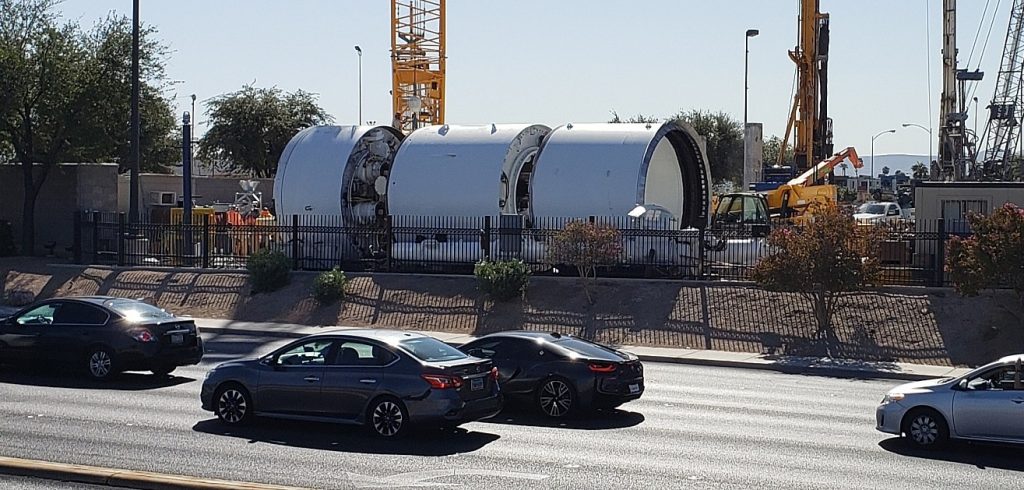

News
The Boring Company skeptics are making the same mistakes as Tesla and SpaceX critics
The Boring Company is truly becoming an Elon Musk-founded company in more ways than one. Apart from developing quite rapidly for a startup of its nature, the tunneling firm is also receiving quite a lot of criticism from avid skeptics, many of whom seem to be under the impression that the Boring Company’s projects are pointless, or badly-planned at best.
Earlier this month, CNN Business published a piece on The Boring Company’s Las Vegas Convention Center loop system, which is poised to be opened early next year. The project was granted a $48.6 million contract but is expected to cost a total of $52.5 million, and it involves two mile-long tunnels where Teslas could ferry passengers from one side of the Las Vegas Convention Center complex to the other.
Needless to say, several individuals consulted by the news agency were extremely skeptical of The Boring Company’s vision. Christof Spieler, a lecturer at Rice University who researches transit and urban planning, sharply criticized the tunneling startup’s concepts, arguing that the Loop system seems poorly thought-out. “These feel like the kind of renderings an architecture student would do for their one-semester project. I don’t see any evidence that this has really been thought through in terms of how it would function,” he said.

Explaining further, Spieler remarked that the LVCC Loop’s renderings make the system look more like taxi-loading areas. With such a system in place, the lecturer noted that issues would likely arise when the system is in operation, such as cars jockeying past each other to pull in and out, which would, in turn, adversely affect the system’s operations. He also noted that the renderings do not seem to show any barriers that would block unauthorized cars from entering the tunnels.
Ultimately, Spieler noted that a standard people mover is still a superior solution, as passengers do not need to duck to board vehicles and they could also hold their luggage instead of accessing a car’s trunk. “It seems like car-thinking applied to a transit problem that we already know how to solve,” he said.
Gerry Tierney, who co-directs the mobility lab at Perkins&Will, which has designed transit systems in North America and the Middle East, was bolder in his criticism of The Boring Company. He took issue with the system’s use of Teslas, calling the idea “comically inefficient” and refusing to call the LVCC Loop a transit system. “This is not a transit system. It’s a system for driving electric vehicles underground,” he said, adding that Musk’s idea is pretty much what would happen if intricate transit systems like the London Underground replaced its subway trains with cars.

While The Boring Company’s technology is yet to be proven, it also seems pretty careless to completely discount the LVCC Loop’s potential even before it could be tested. The Boring Company and its technology are not being developed by a random group of unqualified individuals, after all, and Elon Musk himself has proven over the years that even conventionally insane ideas–such as landing the first stage of an orbital rocket on a drone in the middle of the ocean or scaling the production of a mass-market electric car–could be feasible if enough work is put into them.
Overall, the tunneling startup’s skeptics seem to be making the exact same mistakes as those who were also critical of Musk’s previous projects in SpaceX and Tesla. Musk was not joking when he remarked that the idea of using Teslas in tunnels is more profound than it sounds. This is partly because The Boring Company’s innovations are not really its people-movers, it is the tunnels themselves. While the use of all-electric vehicles in the Loop systems is a key part of the Boring Company’s vision, the startup’s true disruption lies in the ways that it could build tunnels far quicker and far cheaper than any other company in the industry.
The Boring Company intends to accomplish these goals with rather simple solutions. Smaller tunnels are faster to build, so the tunneling startup designed its tunnels to accommodate smaller vehicles. All-electric cars are used so that the tunnels do not require an extensive system designed to handle emissions from vehicles that use it. The Boring Company’s tunnel boring machines (TBMs) are also optimized consistently, making them progressively faster and cleaner to use. These may all seem like little adjustments to conventional tunneling practices, but each one represents a step towards a potential future where tunnels could be built at scale rapidly, and perhaps even autonomously.
It is easy to mock or dismiss the ideas of people like Elon Musk and his teams at The Boring Company, SpaceX, and Tesla. But inasmuch as Musk’s companies make it pretty easy to target them due to their goals and nature, SpaceX and Tesla’s history shows that more often than not, it is a mistake to bet against Musk and his team of visionaries, almost all of whom seem to have the tendency to think outside the box by default. As for the Boring Company’s LVCC Loop, there seems to be a good chance that it could outperform expectations, with recent simulations showing that the system could move about 13,000 people an hour, and that’s with the system operating nowhere near their limit.

News
Tesla FSD fleet is nearing 7 billion total miles, including 2.5 billion city miles
As can be seen on Tesla’s official FSD webpage, vehicles equipped with the system have now navigated over 6.99 billion miles.

Tesla’s Full Self-Driving (Supervised) fleet is closing in on almost 7 billion total miles driven, as per data posted by the company on its official FSD webpage.
These figures hint at the massive scale of data fueling Tesla’s rapid FSD improvements, which have been quite notable as of late.
FSD mileage milestones
As can be seen on Tesla’s official FSD webpage, vehicles equipped with the system have now navigated over 6.99 billion miles. Tesla owner and avid FSD tester Whole Mars Catalog also shared a screenshot indicating that from the nearly 7 billion miles traveled by the FSD fleet, more than 2.5 billion miles were driven inside cities.
City miles are particularly valuable for complex urban scenarios like unprotected turns, pedestrian interactions, and traffic lights. This is also the difference-maker for FSD, as only complex solutions, such as Waymo’s self-driving taxis, operate similarly on inner-city streets. And even then, incidents such as the San Francisco blackouts have proven challenging for sensor-rich vehicles like Waymos.
Tesla’s data edge
Tesla has a number of advantages in the autonomous vehicle sector, one of which is the size of its fleet and the number of vehicles training FSD on real-world roads. Tesla’s nearly 7 billion FSD miles then allow the company to roll out updates that make its vehicles behave like they are being driven by experienced drivers, even if they are operating on their own.
So notable are Tesla’s improvements to FSD that NVIDIA Director of Robotics Jim Fan, after experiencing FSD v14, noted that the system is the first AI that passes what he described as a “Physical Turing Test.”
“Despite knowing exactly how robot learning works, I still find it magical watching the steering wheel turn by itself. First it feels surreal, next it becomes routine. Then, like the smartphone, taking it away actively hurts. This is how humanity gets rewired and glued to god-like technologies,” Fan wrote in a post on X.
News
Tesla starts showing how FSD will change lives in Europe
Local officials tested the system on narrow country roads and were impressed by FSD’s smooth, human-like driving, with some calling the service a game-changer for everyday life in areas that are far from urban centers.

Tesla has launched Europe’s first public shuttle service using Full Self-Driving (Supervised) in the rural Eifelkreis Bitburg-Prüm region of Germany, demonstrating how the technology can restore independence and mobility for people who struggle with limited transport options.
Local officials tested the system on narrow country roads and were impressed by FSD’s smooth, human-like driving, with some calling the service a game-changer for everyday life in areas that are far from urban centers.
Officials see real impact on rural residents
Arzfeld Mayor Johannes Kuhl and District Administrator Andreas Kruppert personally tested the Tesla shuttle service. This allowed them to see just how well FSD navigated winding lanes and rural roads confidently. Kruppert said, “Autonomous driving sounds like science fiction to many, but we simply see here that it works totally well in rural regions too.” Kuhl, for his part, also noted that FSD “feels like a very experienced driver.”
The pilot complements the area’s “Citizen Bus” program, which provides on-demand rides for elderly residents who can no longer drive themselves. Tesla Europe shared a video of a demonstration of the service, highlighting how FSD gives people their freedom back, even in places where public transport is not as prevalent.
What the Ministry for Economic Affairs and Transport says
Rhineland-Palatinate’s Minister Daniela Schmitt supported the project, praising the collaboration that made this “first of its kind in Europe” possible. As per the ministry, the rural rollout for the service shows FSD’s potential beyond major cities, and it delivers tangible benefits like grocery runs, doctor visits, and social connections for isolated residents.
“Reliable and flexible mobility is especially vital in rural areas. With the launch of a shuttle service using self-driving vehicles (FSD supervised) by Tesla in the Eifelkreis Bitburg-Prüm, an innovative pilot project is now getting underway that complements local community bus services. It is the first project of its kind in Europe.
“The result is a real gain for rural mobility: greater accessibility, more flexibility and tangible benefits for everyday life. A strong signal for innovation, cooperation and future-oriented mobility beyond urban centers,” the ministry wrote in a LinkedIn post.
News
Tesla China quietly posts Robotaxi-related job listing
Tesla China is currently seeking a Low Voltage Electrical Engineer to work on circuit board design for the company’s autonomous vehicles.

Tesla has posted a new job listing in Shanghai explicitly tied to its Robotaxi program, fueling speculation that the company is preparing to launch its dedicated autonomous ride-hailing service in China.
As noted in the listing, Tesla China is currently seeking a Low Voltage Electrical Engineer to work on circuit board design for the company’s autonomous vehicles.
Robotaxi-specific role
The listing, which was shared on social media platform X by industry watcher @tslaming, suggested that Tesla China is looking to fill the role urgently. The job listing itself specifically mentions that the person hired for the role will be working on the Low Voltage Hardware team, which would design the circuit boards that would serve as the nervous system of the Robotaxi.
Key tasks for the role, as indicated in the job listing, include collaboration with PCB layout, firmware, mechanical, program management, and validation teams, among other responsibilities. The role is based in Shanghai.
China Robotaxi launch
China represents a massive potential market for robotaxis, with its dense urban centers and supportive policies in select cities. Tesla has limited permission to roll out FSD in the country, though despite this, its vehicles have been hailed as among the best in the market when it comes to autonomous features. So far, at least, it appears that China supports Tesla’s FSD and Robotaxi rollout.
This was hinted at in November, when Tesla brought the Cybercab to the 8th China International Import Expo (CIIE) in Shanghai, marking the first time that the autonomous two-seater was brought to the Asia-Pacific region. The vehicle, despite not having a release date in China, received a significant amount of interest among the event’s attendees.








